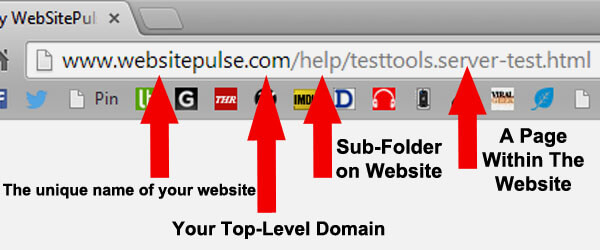“A domain name is a completely unique name that points to an internet resource, mostly commonly a website.”
There can’t be any duplicates with domain names, so if a domain name that you want to use is already taken you will have to come up with an alternative. To access a website the DNS (Domain Name System, think of it as the phone book of the internet) tells your browser what IP address the domain is housed at.
A Brief History of the URL
Initially all domains had to be registered through IANA (Internet Assigned Numbers Authority) which was being run by one person through USC’s Information Sciences Institute. Back then there were only seven generic top-level domains: .com, .org, .net, .int, .edu, .gov, and .mil plus country code domains. In September of 1998 ICANN, the Internet Corporation for Assigned Names and Numbers) was incorporated in response to the call for privatization of the domain registration system.
The New TLD’s (Top-Level Domains)

Starting this year ICANN has introduced several more top level domains for business and specific interest websites such as .coffee, .education, .info, and more. The full list can be found here.
Here are some of our favorites:
.BUZZ
.PHOTOGRAPHY
.CODES
.CLEANING>
.BARGAINS>
If the domain that you would like is not available as a .com, you might be able to get it as a different top-level domain.
What’s the Difference Between a Domain and a URL?

The Elements of a Domain Name.
A domain name will sometimes be referred to as a URL, which stands for “Uniform Resource Locator“. This is correct, however the acronym URL can also be used to refer to an FTP or email address. If we break down the different parts of a domain name we get 4 distinct sections.
- HTTP stands for Hyper Text Transfer Protocol, the simplest explanation is that it tells your web browser and the server how they should exchange and transfer text, and how the information links together via hyperlinks.
- The ‘www’ stands for world wide web, which means that you are making this information publicly available and accessible to anybody on the internet, as opposed to something like an intranet that only people on a local network would be able to access.
- The part of your domain name that you get to choose is the second-level domain. So in http://www.example.com the ‘example’ part would be your second-level domain.
- And then finally you have your top level domain extension, such as .com, .org, .biz, etc. Sometimes you will see subdomains added in as well, in fact this is standard practice in the UK, for example the .nhs.uk subdomain is use for all websites for institutions of the National Health Service.
Picking a good domain name for your website is important, it should reflect what your site is about and not be too long or difficult to remember. If you’d like to save some money, GoDaddy has a coupon for $1.99 new domain registrations.

 Ecoerth Coupon Codes and Hosting Discounts for your Website Hosting Needs.
Ecoerth Coupon Codes and Hosting Discounts for your Website Hosting Needs.
